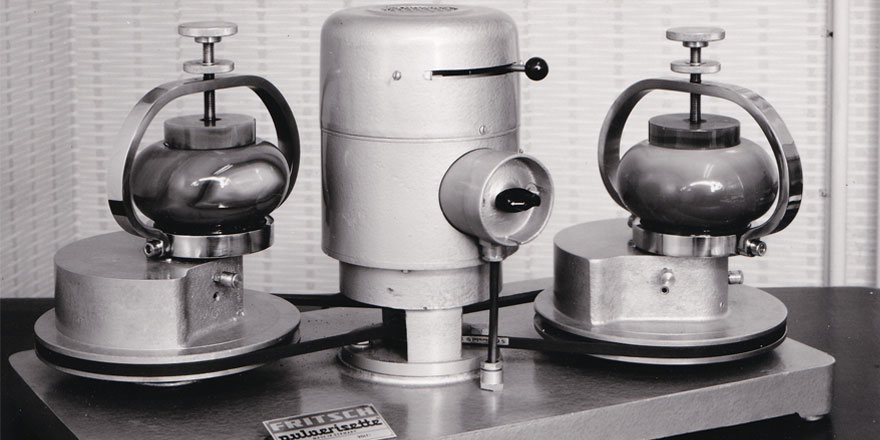

Idar-Oberstein 1920
The First World War is over, the young republic is founded. Everything's set for a fresh start. Also in the Hunsrück, occupied by France, where Idar and Oberstein are still two of the largest gemstone centers in Europe. A good time for young founders with new ideas. Just like Alfred and Max Fritsch, who, like few young men of their generation, have survived the front line operation unharmed. Full of energy they return home and have a vision: to build something that remains.




Generation 2: Paul und Willi Fritsch – Fresh start after the war
1949 - Idar-Oberstein has been liberated by American troops for four years and new times are dawning for FRITSCH. Alfred's sons Paul and Willi survived the war, but he himself has no strength left. It is time for a generational change, which definitively takes place in the mid-1950s. The two young enterpeneurs have economic growth in mind and inherited the commercial genes of the family. And the German economic miracle is preparing the ground for their enthusiasm. They focus fully on the modern automation of manual work and launch the first FRITSCH instrument, the mortar grinder.

60s: The company grows
In close cooperation with various universities, Paul and Willi Fritsch are constantly developing new laboratory equipment and strategically expanding the product range of PULVERISETTEN, ANALYSETTEN and LABORETTEN. 1962 FRITSCH's first fully automated Planetary Ball Mill is launched on the market and defines the next step in sample preparation. At the same time, a converted VW Bulli is the first FRITSCH laboratory bus to travel through half of Europe, packed with technology "made in Idar-Oberstein". A marketing stroke of genius from Willi Fritsch, who is far ahead of his time as a marketing expert.

70s: FRITSCH goes international - and starts production
The company is growing and posts great figures. But the competition is not asleep. Paul and Willi Fritsch have to react and in 1973 switch from pure sales to also production at today's location. Better, cleaner, more error-free and efficient than before. To do this, they bring experts on board who are familiar with the subject and further increase the number of employees. In 1975 FRITSCH laboratory instruments were exhibited for the first time at a trade fair in Beijing - and soon afterwards at almost every important trade fair in the world. Russia, South America, Asia: Markets and sales are growing rapidly.


Generation 3: Robert Fritsch – Setting the course with a vision
At the dawn of the 1980s, cousins Robert and Achim Fritsch took over the management of the company, before Achim turned to other interests. Robert set the course for renewal creating FRITSCH as it’s today: the conversion to information technology, one location for office, laboratory and production and the strategically important development of the opening countries of Eastern Europe as additional sales markets. With his leadership, FRITSCH launches the first fully automatic instrument for the determination of particle sizes and expands the product range.

Generation 4: Max and Sebastian Fritsch – the story continues
For the 100th anniversary the sons take over the baton and are ready to lead FRITSCH into the next century.
Just like father, grandfather, great-uncle, great-grandfather and great-grand uncle showed them. And with their very own ideas and visions.
Thank you Alfred and Max, thank you Paul and Willi, thank you Achim and
THANK YOU - Robert Fritsch!

FRITSCH – The movie
Take a look at 100 years of FRITSCH in moving images that entertain, charm and move.
It's worth it!
